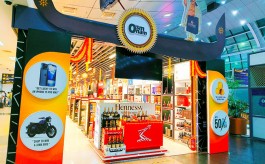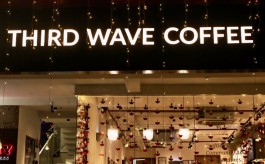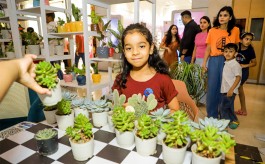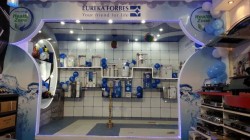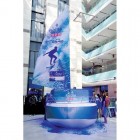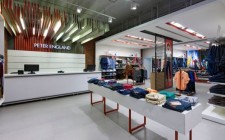Decoding general trade
By N Jayalakshmi | Vjmedia Works | January 24, 2013
Like it or not, GT is a space no FMCG brand worth its products can ignore. But, does the brand really understand this space?
 In this first part of an in-depth look at brand visibility in general trade; we address questions related to GT by speaking to POP solutions providers and those connected with shopper marketing as they share their learning, experiences and suggestions.
In this first part of an in-depth look at brand visibility in general trade; we address questions related to GT by speaking to POP solutions providers and those connected with shopper marketing as they share their learning, experiences and suggestions.Meet Gokuldas, 65, owner of Gokul Provision Store, a friendly neighbourhood provision store, and an integral part of the family's monthly provision replenishment plan. Now meet Akshay, 30, sales manager at a leading FMCG brand launching a new range of herbal shampoo. Both are connected by a single need - to connect with their shoppers. And what they also share is a complex equation. Akshay needs Gokuldas to give him access to this complex unknown entity called the shopper, while for Gokuldas, Akshay represents an opportunity to increase his own margins. But herein lays the rub. As Akshay thinks Gokuldas is a tough nut to crack, the latter thinks Akshay is a tenacious but naive sales person who does not understand his business or his shoppers. Well, the Gokuldas-Akshay equation possibly represents the classic general trade - brand equation. For, even as retail formats keep expanding and evolving, the Kirana next door offers conveniences which no time starved shopper can resist. Thus for a brand, this store space has always offered a critical touchpoint.
Beginning with pure print based elements such as danglers, posters, banners and the like which exactly replicated the ATL communication, GT communication expanded into more permanent visibility in terms of the materials and in terms of a greater focus on innovation in order to break clutter. The evolution of retail into self service modern formats further enhanced the thrust on differentiated communication. Says Thomas Joseph, Director, Bangalore-based Fourth Dimension India Pvt Ltd, "Brands have moved on to more permanent solutions focusing on how to bring the product upfront in GT.†Some of these changes in approach are reflected in the way they plan the whole visibility programme in GT and translating that in a brief to the fabricator.
Says Yogesh Chawan, Creative Head, Brandmark, "Irrespective of the general or modern trade, the initial brief from brands mainly emphasizes on inculcating a buzz about the product for which the visibility has to be created. A usual norm followed is to extract a brief which gives ample insights into the brand's expectations, whether they target the masses or a certain target audience. A situational analysis is conducted wherein the brand, competition, category requirement and brand requirement are scrutinized and applied to achieve a creative and attractive clutter breaking solution which stands apart from the typical existing designs.â€
"Established brands today allot fairly large budgets to occupy prime space at the store. This is usually a combination of multiple approaches- incentivizing the retailer through better commissions, upfront payment or by providing merchandise that help upgrade his space. There is also a marked change in terms of the money spent, expectations on quality and materials used,†adds Thomas.
And where the spend on GT visibility is concerned, according to Thomas, it has in fact gone up multifold in the last 15 years. And this is, after accounting for inflation.
And where the spend on GT visibility is concerned, according to Thomas, it has in fact gone up multifold in the last 15 years. And this is, after accounting for inflation.
A lot of these changes have also been brought about by the emergence of MT and the need to recreate an MT like space within the GT space.
But the question is, are these changes enough of a change where the brand approach to GT is concerned? Apparently not, as a large chunk of the visibility elements are still the typical posters, danglers and streamers and sadly connectivity at the last mile is still a last minute aspect. Many in the industry feel that while brands may have superficially changed their approach to visibility, there has been very little change in their understanding of what really works here. Thus it emerges that there is a big need to follow a customized approach. As Bijitesh Mallik, CEO, BrandVak Incorporation, a Bangalore-based retail and shopper marketing solutions company says, "Poster and the like that echo the ATL communication simply do not work in GT. The need is to have a communication that is relevant to the retail space. This is critical. There is no point in doing so many activations across so many outlets without understanding whether they really serve the objectives.â€
Agrees Rahul Saigal, VP-Retail, OgilvyAction, India while touching on the need for a differentiated communication specific to GT as against MT, "A good shopper marketer ought to understand that general trade and modern trade need to be treated very differently. The physical environment and shopper groups can be very different. Shopper engagement elements need to be created accordingly.†Speaking of MT, it also emerges that while the MT and GT dynamics are different, the former could very well be used to create the first touchpoint when the shopper is browsing and looking around and then extend that and create recall at GT. Agrees Bijitesh, "You have to create aspiration and connection in MT and then that can be used to trigger purchase at GT.â€
Challenges
General trade comes with its own challenges, starting with the problem of budget. Despite greater spends, the budget is perceived to be low, since over 80% of sales volumes happens at GT. But according to some in the industry, more than the budget per se, it is the justification of the budget vis-Ã -vis the product that is critical. This is because while brands do not mind spending on MT where the off take is far less, they think twice when it comes to GT spending.
Transportation and logistics are another crucial challenge, with no assurance of the safety or quality maintenance of the product. Added to this is the whole unpredictability of this environment where there are no set frameworks for any visibility programme, or any guarantee from the retailer with regard to the stocking of a product.
But the most crucial challenge is of course space. Says Yogesh Chawan, "In our experience , due to the fact that the visibility is very cluttered and there is always space constraint in general trade, majority of the brands cannot experiment with categorization of their product display apart from using Shelf In Shelf units or Shelf In Shelf Branding, attractive stickers to highlight the visibility.â€
Well, when it comes to space, it is not just the amount of space available which is a challenge but also the negotiation for space with the retailer. Says Rajesh Bhatia, Partner, Rex Enterprises, "Working with the retailer is a nightmare, you have to keep going to them and sometimes when you go with the FSU you find the space given to another brand. Each shopkeeper is the master of the stall and he does not like you to field around it.â€
Connecting with the retailer
A lot of the challenges boils down to how well you can connect to the retailer and convince him to stock and sell your product. As Bijitesh says, "Retailer is not really concerned with what your product offers. His only concern is with serving his customer and simultaneously improving his margins.†This means that a duplicate private label brand selling at a much cheaper rate could very well be pushed by the retailer simply because it improves his off-take. So given this, how do you make your brand right up on the retailer priority list?
Defining innovation
Well this is where innovation comes in and the need to define it in this context. Says Rajesh from Rex, "Innovation is creating something the retailer will use in terms of shelving and highlighting the brand which will bring in sales. So you are actually creating shelving for them which will help the brand in getting a lot of mileage and where customers build relationship with the brand in GT.†Well, there is unanimous agreement with this view. Elaborates Thomas while giving examples, "Understanding of space constraints, demographic differences, retailer attitudes and the product fit at the outlet needs constant research to provide visibility at GT. Some of the cases research could take anywhere between three months to eight months.â€
 According to Sairam Thiagaraja, CEO, Sab Creations, lot of innovations are in fact possible in GT. "One classic example is the Kissan Basket which we created for Unilever. The idea was to stock up the entire Kissan range (jam+ketchup) on the top layer of the unit & allow the shop keepers to keep the breads etc. on the bottom layer of the unit. This was well received in the trade,†he says.
According to Sairam Thiagaraja, CEO, Sab Creations, lot of innovations are in fact possible in GT. "One classic example is the Kissan Basket which we created for Unilever. The idea was to stock up the entire Kissan range (jam+ketchup) on the top layer of the unit & allow the shop keepers to keep the breads etc. on the bottom layer of the unit. This was well received in the trade,†he says.
Well, most of these innovations are simple but smart ideas that are cost effective, functional and practical and offer good brand visibility in a cluttered environment.
Customization
Customization is vital here, given the sheer scale of variation in the GT space and numbers. Street to street, there are variations in terms of size and other dynamics and even within the GT environment, there is the pure play Kirana, the Kirana evolving into a bigger space with more space for shopper movement, the GT chemist, the bakery etc with each having its own needs. Thus the'one fits all' approach would hardly work.
Need for thorough study and more
What this also means is the need for tremendous amount of research and pilot trials that are required with enough investments in terms of time and manpower. "It is important to conduct adequate shopper research before framing insights and developing shopper campaigns. First, shopper planners should have a very clear idea about who the dominant shopper group is. Next shopper marketers should find answers to three critical questions for each channel: What is the dominant purchase decision hierarchy? What are the relevant consumption occasions? What is the dominant shopping mission? Based on insights developed from the above questions, shopper marketers should develop a shopper proposition and/ or the call to action. The shopper campaign (across all touch points) should flow from this shopper proposition,†says Rahul Saigal.
Gearing up
This also entails gearing up on the part of fabricators and POP solutions service providers whose revenues ratio of GT:MT would at an average still be about 60:40. Some of them have realized the need to stay ahead and be a provider of value added services rather than being a producer with research on systems and services that could ease the operational issues in GT deployment and on value added feedback to the client. But for their efforts to bear fruits would also require efforts on the part of the brand to spend time and investment in research and manpower, as already mentioned, to study the GT environment and arrive at a well planned visibility programme rather than a last minute deployment of danglers and posters. As Thomas says, "The most encouraging aspect today is that clients have started moving to a planned approach specific to BTL. Today upto 45% of projects are planned allowing a tremendous amount of value addition in terms of material, process and budgets.†Well, if the same approach could be followed for a majority of General Trade visibility programmes, then innovations could be tapped in a more meaningful manner and POP solution providers too might be better incentivized to bring more to the table. So who's listening?
Tags :
General Trade
Advertisement

